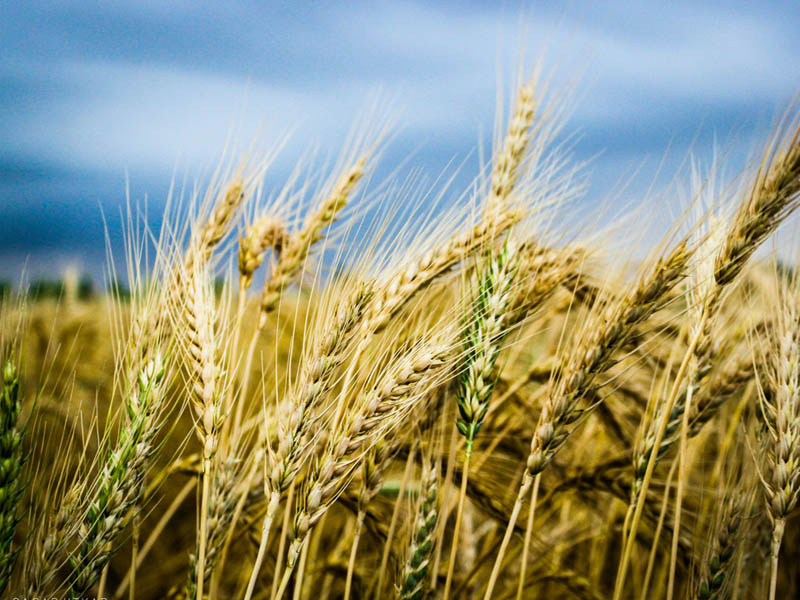I may have spent a lot of time making a case for eating millets, but the fact of the matter is that wheat remains one of the most widely consumed cereals since the prehistoric times. Wheat is easy to work with in the kitchen, less expensive than many other grains, and most easily accessible, all of which are great reasons that make it immensely popular. With so many people around the world eating wheat, it is natural for us to want to know more about it.
The Old & New Varieties of Wheat
It is commonly believed–and mistakenly so–that the ancient varieties of wheat (Spelt, Emmer, Einkorn and Kamult) are gluten-free. All of these wheat grains contain gluten and certainly cannot be included in the Gluten Free Diet. Incidentally, these wheat grains happen to go by their unique names on food labels, making it difficult for consumers to identify the presence of gluten in products. So, that’s something to look out for if you’re on a gluten-restricted diet.
- Einkorn is the oldest variety of wheat ( >10,000 years old), hence known as humankind’s ‘first wheat’. The plant is taller than usual and the wheat kernels are smaller, providing a lower yield than the modern-day wheat plant. An upside is that the plant can grow in poor, dry soil, where the modern varieties won’t survive. It has a high content of lutein (a form of vitamin A), which is great for eye health. It’s true that Einkorn has a lower gluten content (but it is not gluten-free), so recipes that use this variety of wheat may need to be modified to make the food softer. This has to be kept in mind especially when making bread with this wheat to avoid a dense and heavy product.
- Emmer, a staple in the ancient Egyptian diet, was a valuable grain that could be grown in poor soil and was resistant to fungal disease, a common problem in wet regions. Later, this variety of wheat became popular in Italy, where it was known as Farro. It is Emmer that gave rise to Durum wheat, which is popularly used for making pasta. However, be warned that if you find ‘pearled farro’ on a food label, it’s wheat without the bran and germ, making it quick and easy to cook, but nutritionally deficient. Wherever there’s a choice, opt for wholegrain or semi-pearled farro.
- Spelt, a relatively younger variety among the ancient grains, has regained its popularity with the organic food movement. It has a higher gluten content, which is why it is most preferred for making bread. It is also used for making vodka and beer, so those with gluten sensitivity better be watchful of these foods, too.
- Kamut is a variety that was earlier known as Khorasan. It is high on antioxidants, especially selenium. It has a sweeter flavour than the other varieties, hence valued for preparing food products like cakes, cookies, waffles, etc. The gluten content is on the lower side, so it requires recipe adjustments to make the baked goods softer and less dense.
Increasing Incidence of Wheat Intolerance
A question that I commonly come across pertains to the increasing incidence of Celiac Disease (CD), Non-Celiac Gluten Sensitivity (NCGS) and Wheat Allergy, and whether the newer varieties of wheat have anything to do with it. The human race has been eating wheat for centuries, so why is this problem increasing so rapidly in the modern day?
Scientists at the Leibniz-Institute for Food Systems Biology at the Technical University of Munich investigated the protein content of 60 preferred wheat varieties between the years 1891 and 2010 to find some answers. Their analysis has revealed some interesting facts. For one, the overall protein content of wheat has not changed much in this period. If at all, there is a marginal decline in the period of 120 years. It’s useful to note that gluten accounts for the lion’s share of protein in the wheat grain. Gluten is roughly divided into two subgroups – gliadins and glutenins. While the total gluten content in the modern varieties of wheat has remained largely unchanged, the composition has changed. The gliadin content (suspected for causing immunogenic reactions) has fallen by 18%, while the proportion of glutenins has risen by 25%. The changed composition has not increased the immunoreactivity potential of wheat. However, the caveat in this study is that not all protein types in wheat had been studied. Until there’s more research on this subject, we cannot ascribe the rise of gluten intolerance to the newer varieties of wheat.
For those who tolerate gluten well, wheat remains an excellent choice of grain.
 |
Ms. Neelanjana Singh, Nutrition Consultant & Author |


